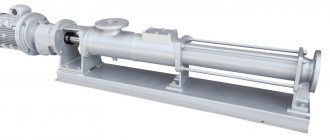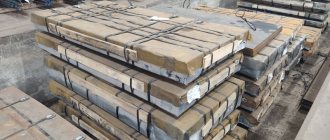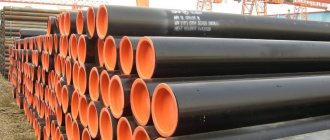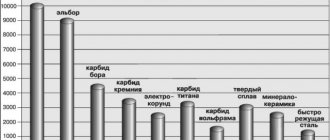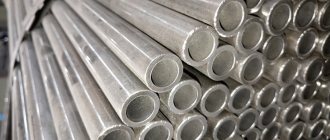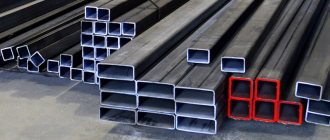A hand-held welding tool - an extruder - today is no longer something unusual or supernatural. Thanks to modern technologies, it has become possible to create such a tool with your own hands.
The extruder is designed to make permanent connections of various plastic products, which are carried out by feeding a molten mass of material into a heated bath formed by the edges of the samples being welded.
This tool is used for the production of containers, sheet products, and repairing damage to plastic structures, for example, soldering car bumpers made of plastic.
The extruder has no weak points, it has a long service life and is easy to operate. Enterprising people purchase semi-finished plastic products and use this tool to make unique designs. One of these projects can be about. A pontoon was used as a base for it.
Technical characteristics of extruders RSE-1 and RSE-3
| Extruder model | Dimensions | Weight, kg | Filler material | Thickness of joined sheets, cm | Seam width | Loading hopper capacity, kg | Nutrition | Heating mechanism power |
| RSE-1 | 580\300\200 | 6 | PE, PP (granules, secondary crushed material) | until 3 | depends on nozzle diameter | 0.35 kg | 220 V. | 2,000 W |
| RSE-3 | 520\200\200 | 6.6 | Round rod, cross-section - 4 mm | up to 2 | Depends on diameter nozzles, 3—12 mm | — | 220 V, 50 Hz | 2,000 W |
Types of nozzles for welding plastics
Welding attachments differ in the type of seam that will be produced during the manufacture of the product. The seam can be butt, corner (external and internal). Depending on the type of seam, the welder selects the optimal cross-section of the welding rod that he will use. The rod can be round, oval, triangular, flat. Accordingly, the nozzles for welding will be for a round rod, for a triangular rod or flat-slit. These nozzles can be considered quick welding nozzles; in addition to them, there are also adapter nozzles that are used to switch to quick welding nozzles.
Attachments for welding polypropylene sheets with extruders also differ in the type of seams and rods that will be used in the work.
Do-it-yourself extruder for welding
This idea arose more than 60 years ago, so until today it has undergone many different changes and has become almost ideal. A huge number of mechanisms have appeared that differ in the technique of influence, but are almost uniform in terms of the resulting structures.
How is the base of the proposed part heated? Everything is quite simple: as a result of mechanical procedures, thermal energy is generated, which contributes to additional heating of the plastic. External thermal influences cannot be excluded. In this case, the process depends to a large extent on the initial structure of the extruder.
Manual welding extruder: working principle
The extruder is not a difficult tool to operate; there are three versions:
- cold forming;
- hot extrusion;
- heat treatment.
Thermoforming is the most popular technology today. The procedure is carried out at high speed and under maximum pressure. To implement it, a screw extruder is used, the main design element of which is a specially shaped screw. The forming procedure in this case is performed at the outlet. The raw material, together with the additional elements used, is placed in a special chamber.
Factory equipment can be equipped with special devices on which the mixing and movement of raw materials depends.
Production
How to make your own manual welding extruder for joining polypropylene products? The assembly procedure for such a tool is not particularly difficult, as it might seem at first glance. Anyone can assemble it.
Making an extruder is a rather fascinating process that directly depends on the purpose and shape of the device.
How can a homemade extruder differ from a factory one:
- assembly of structural elements;
- number of working chambers;
- the presence of additional systems.
The cylindrical shape of the tool remains unchanged. Today it is considered the most technologically advanced, so it remains unchanged.
Homemade device
The welding extruder is a complex mechanism for professional use. Its price starts from 30 thousand rubles for the simplest model, and can reach one hundred thousand or more for a powerful and high-performance one. Domestic developments are also presented on the market; they are 10-20% cheaper than imported ones, but are still quite expensive.
Therefore, if a one-time need arises to weld, for example, two water pipes (their usual material of manufacture is polypropylene), it is easier to use a home-made extruder. The simplest version of the design is a powerful construction hair dryer, equipped with a nozzle for a rod - either homemade, made of tin, or industrially made .
In this case, the bar will be fed manually. The power of the hair dryer is enough to melt it, but the quality of the seam, of course, will be lower than that of industrial models.
If possible, the hair dryer can be connected to a screw or plunger drive to supply power. In this case, if you install a receiving chamber, it will be possible to use granulated raw materials.
A commutator motor is recommended for the drive, since the operation of the extruder implies a constant change in torque. Engines of other types are less resistant to this operating mode.
Technological differences
It is still necessary to highlight several rather important points, in particular this concerns the dry extrusion procedure, which directly depends on the thermal energy released by the device itself, generated during operation. It also remains possible to involve steam in the process, for which an individual chamber is available. Steam is necessary to increase the wear resistance of equipment. The technology is characterized by high speed of work; the procedure is carried out in only 30 seconds. A plastic welding machine can perform the following operations with raw materials in such a short period of time:
- grinding;
- dehydration;
- mixing;
- disinfection;
- stabilization;
- increase in volume.
To make your own manual extruder at home, you need to purchase a certain list of parts:
- auger of the required shape;
- electric motor;
- housing for the device;
- feed capacity;
- output capacity;
- vacuum chamber.
To make a tool for welding plastic products with your own hands at home, it is enough to understand the procedure for creating an extruder and its working principle.
Theoretical basis
Extrusion welding is applicable only to materials with a wide temperature range at which their viscous-fluid state is maintained, such as polyethylenes, fluorolones, plasticized polyvinyl chloride, polystyrene. Such materials, capable of heating above the pour point, are called thermoplastics. The temperature range between melting and thermal destruction (destruction of the material) for thermoplastics is 50-180°C degrees.
The strength of a joint obtained by extrusion reaches 80-100% of the design strength of the parts themselves, but it strongly depends on the temperature of the additive. The filler material is heated to a temperature exceeding its fluid temperature (Tm) by 30-60°C degrees. The heat of the additive is consumed for losses to the environment, for melting the joined edges of parts and for maintaining the viscous state of the mass itself.
It should be noted that in this case, the heating temperature of the parts should not exceed the temperature of thermal destruction of the material, since this will lead to a decrease in the strength of the connection and will decrease.
The diagram below shows the process of changing the structure of the polymer with increasing temperature.
Only connections made of thermoplastics made of the same material can be connected. In this case, the additive must be made of the same substance as the surfaces being joined. If the parts being welded have different yield strengths, the yield strength of the additive must be equal to the average value of the PT of the parts being joined.
PVC and PVDF have a small range of melting and destruction temperatures, so their connection must be carried out under careful temperature control. To weld such materials, extruders with a screw are required, which thoroughly mixes the viscous mass, and welding must be done in one step, without periodically turning off and heating the extruder.
Extrusion welding can be used to form continuous extended seams on reinforced materials and films. With this connection, the extrusion mass enters the connection of films, which are pulled through rolling rolls. The seam to be joined is then passed through pressure rollers to form a weld seam.
To keep heat loss to a minimum, extrusion welding should be carried out with the largest possible filler rod diameter and high filler feed rate.
Please note that extruder welding is prohibited for use on pressure pipelines.
In Russia, the rules for extrusion welding are regulated by the GOST 16310-80 standard; this standard regulates the types of joints, operating temperature range, part thicknesses, edge sizes and other technical parameters.
In world practice, the use of the German standard DVS 2207-4, which more broadly regulates extrusion welding, is widely used.
Examples of technical welding parameters are given in the table.
Equipment
For extrusion welding of plastic, profile devices called extruders are used. They are designed for manual seam formation and are intended for outdoor and indoor use.
The extrusion unit for pipe welding includes the following components:
- A heating element. Welding machine module that heats the additive and the air supply unit.
- Screw. A rotating element that forces the molten additive through a nozzle. Instead of a screw, a plunger can be used.
- Controls. Keys to control the extrusion welding process.
- Air supply block. The part of the extruder that supplies hot air to the weld area. This ensures heat treatment of the surface, guaranteeing integration of the extruded material.
- Storage device. Unit for storing extrusion wire or granules. In the first case, a spool holder is used, in the second, a small hopper is used.
- Shoe. An auxiliary element that simplifies extruder welding. The shoe is located at the end of the device. It presses down the supplied additive, preventing it from leaving the welding zone. The element is made of refractory polymer and is resistant to temperature and abrasion.
The shoe is a removable part of the extruder, repeats the geometry of the weld, and is selected taking into account the work being carried out. Some nozzles are used for welding pipes, others for making tanks, and others for making casings.
Proper selection of the shoe simplifies extruder welding and allows you to obtain a tight and durable connection.
Manufacturers offer equipment for extrusion welding with left and right nozzle placement. This simplifies preparation for the process and carrying out work.
The price of an extrusion module for pipe welding starts from 30,000 rubles (MSK). Outside Moscow, the cost of equipment for extrusion welding can increase significantly.
When choosing an extruder, it is important to remember the compatibility of additives. Domestic devices work with Russian and Western products, foreign ones - only with wire and granules approved by the manufacturer. Trying to use local materials in an imported extruder increases the likelihood of expensive equipment failure.
The process of connecting parts
The process of preparing and carrying out welding work using extrusion coatings is as follows:
- After starting and warming up the extruder, it is cleaned of previously used material. The additive cannot be reused because its strength characteristics are reduced,
- 15-20 minutes before the start of welding work, the surfaces to be joined are cleaned of dust, oil and grease contamination by mechanical action (scrapers, fine sandpaper),
- The ends of the joints are processed for the required seam, bevels or welding grooves are prepared on the surfaces to be joined,
- The surfaces to be joined are heated with hot air,
- The additive material enters the extruder, where it is heated from the jacket of the screw chamber and mixed until a homogeneous paste-like mass is obtained,
- The extrusion, heated to a viscous state, is squeezed through the shoe onto the welding seam, partially melting the parts being welded and mixing with their substance,
- The necessary pressure is applied to the surfaces to be welded using a welding shoe to ensure the fixation of the parts. The strength of the applied pressure depends on the materials: for example, for LDPE a wide range of pressures is acceptable, and the strength of the polypropylene connection decreases when too high pressure is applied.
- The cooling process takes place under natural conditions, since forced cooling leads to a decrease in the strength of the seam due to temperature changes.
There are two main types of extrusion welding – non-contact and contact.
The non-contact welding method requires the use of clamping devices or presses, which apply pressure to the parts being joined. With this method, extrusion is supplied from a mouthpiece that is not inserted into the connector.
With the contact method, the mouthpiece is inserted into the connector to be connected until it contacts the edges and moves along the joint at an angle of 10-15° degrees, filling the cavity with filler mass. The pressure created by the additive eliminates the need to apply additional pressure to the material. Such welding allows for heat loss and additional heating of the joined surfaces due to the heat from the mouthpiece.
